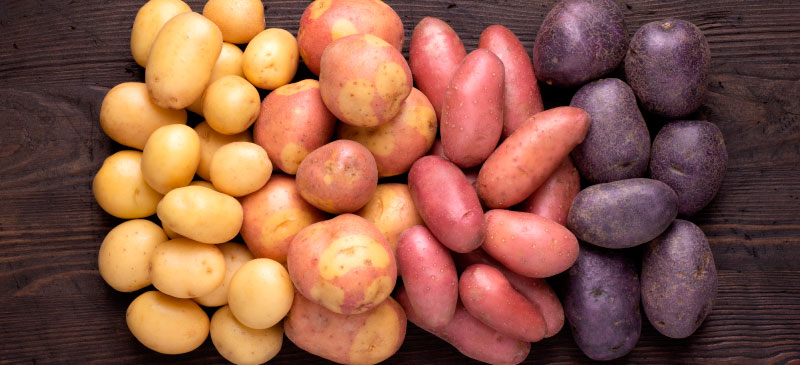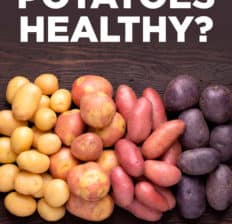This Dr. Axe content is medically reviewed or fact checked to ensure factually accurate information.
With strict editorial sourcing guidelines, we only link to academic research institutions, reputable media sites and, when research is available, medically peer-reviewed studies. Note that the numbers in parentheses (1, 2, etc.) are clickable links to these studies.
The information in our articles is NOT intended to replace a one-on-one relationship with a qualified health care professional and is not intended as medical advice.
This article is based on scientific evidence, written by experts and fact checked by our trained editorial staff. Note that the numbers in parentheses (1, 2, etc.) are clickable links to medically peer-reviewed studies.
Our team includes licensed nutritionists and dietitians, certified health education specialists, as well as certified strength and conditioning specialists, personal trainers and corrective exercise specialists. Our team aims to be not only thorough with its research, but also objective and unbiased.
The information in our articles is NOT intended to replace a one-on-one relationship with a qualified health care professional and is not intended as medical advice.
Are Potatoes Healthy? Potato Nutrition, Benefits, Recipes & Side Effects
November 26, 2022

The potato is a staple food in American cuisine, often used as in side dishes to accompany a protein and vegetable. This vegetable is inexpensive, available worldwide and relatively easy to grow. So are potatoes healthy, and if so, how many should eat?
The biggest vegetable crop in the United States, potatoes are one of the most commonly eaten foods in the country. Although they aren’t as popular in recent decades because more people opt for low-carb foods, potatoes have served as a nutritious and filling food for centuries, beginning in South America.
They are underground tubers that grow on the roots of potato plants and one of the most popular root vegetables around.
Today, there are many types of potatoes at any local grocery store, but the humble white potato remains a classic and favorite fall vegetable. It’s commonly baked, mashed and fried and added to countless recipes, from stew to savory pies.
Health Benefits
Potatoes on their own offer a range of health benefits that come from their impressive nutrition content. Keep in mind, however, that once you start adding toppings, like cheese, sour cream, bacon or excessive salt, or you eat snack foods like potato chips, you counteract some of these potential benefits.
When you’re mindful of your portions and toppings, potatoes offer the following health perks:
1. High in Fiber
Potatoes are a good source of dietary fiber, which is key for digestive health. Eating high-fiber foods promotes regularity, supports weight loss and improves cardiovascular health. Fiber also promotes healthy cholesterol levels.
2. High in Vitamin C
Potatoes are considered a great source of antioxidants and vitamin C, a micronutrient that plays a role in maintaining the body’s connective tissue, protecting the heart, improving immunity and boosting the absorption of other consumed nutrients.
Research shows that vitamin C also promotes healthy skin and collagen formation, an important protein that aids wound healing and is used to form blood vessels, ligaments and tendons. As adults age, their collagen production declines, which is why eating vitamin C foods is beneficial.
3. Aids Digestion With Prebiotics
The resistant starch found in potatoes serves as a prebiotic, a non-digestible fiber compound that helps feed probiotics in the gut. Research suggests that increasing your intake of prebiotics may improve gut health and your body’s response to stress, reduce inflammation, aid weight loss, and improve digestion.
4. Good Source of Potassium
Potatoes are a good source of potassium, an essential nutrient that’s needed to maintain fluid and electrolyte balance in the body. Potassium is also required for several body functions, including maintaining hydration and allowing for organs such as the heart, kidneys and brain to work properly.
Studies show that eating high-potassium foods promotes heart health, helps lower blood pressure, reduces the risk of stroke, and may even prevent PMS cramps and muscle weakness.
5. Contains Vitamin B6
While not as high in vitamin B6 as animal meat, beans and seeds, potatoes are a good source of the micronutrient and therefore help maintain healthy metabolism and other important body functions.
Eating potatoes helps support brain function, improve mood, protect eye health and reduce inflammation because of their vitamin B6 content.
Potato Nutrition Facts (and Types)
Potatoes contain bioactive plant compounds that have health-promoting properties, including lutein, chlorogenic acid and glycoalkaloids. They are also rich in fiber and micronutrients.
One medium-sized baked potato (about 173 grams) with the skin contains roughly the following:
- 161 calories
- 36.6 grams carbohydrates
- 4.3 grams protein
- 0.2 grams fat
- 3.8 grams fiber
- 16.6 milligrams vitamin C (28 percent DV)
- 0.5 milligrams vitamin B6 (27 percent DV)
- 926 milligrams potassium (26 percent DV)
- 0.4 milligrams manganese (19 percent DV)
- 2.4 milligrams niacin (12 percent DV)
- 48.4 micrograms folate (12 percent DV)
- 48.4 milligrams magnesium (12 percent DV)
- 121 milligrams phosphorus (12 percent DV)
- 1.9 milligrams iron (10 percent DV)
- 0.2 milligrams copper (10 percent DV)
- 0.1 milligrams thiamine (7 percent DV)
- 0.7 milligrams pantothenic acid (7 percent DV)
- 0.1 milligrams riboflavin (5 percent DV)
- 3.5 micrograms vitamin K (4 percent DV)
- 0.6 milligrams zinc (4 percent DV)
Potatoes come in a variety of shapes, sizes and colors. The most common types of potatoes include:
- White and red potatoes: White, red, yellow, russet and fingerling potatoes are among the most common. They are low in price and easy to incorporate into meals. While other types of potatoes are higher in nutritional value, these are good sources of fiber, vitamin C, potassium and vitamin B6.
- Sweet potatoes: Sweet potatoes have an impressive nutrition profile, containing more fiber than white potatoes, plus over 400 percent of your daily recommended value for vitamin A. They are also rich in vitamin C, manganese, vitamin B6 and potassium.
- Purple potatoes: Purple potatoes have a nutty, earthy flavor and offer micronutrient levels similar to white potatoes. They are good sources of vitamin C and potassium and have a decent amount of protein per serving.
How to Choose, Cook and Use (Recipes)
Potatoes are available year-round in grocery stores. An uncooked potato has a shelf life of about one week and can be stored at room temperature.
Look for a firm potato that has smooth skin and no cracks, bruises or cuts. Before cooking, clean the skin of residual dirt, but keep the skin on when possible.
There are many ways to prepare potatoes and add them to meals. They can be:
- Boiled
- Baked
- Roasted
- Fried
- Microwaved
If you’re eating potatoes for their nutritional value, then baking, roasting or microwaving them are the best options. This allows for less nutrient leaching and doesn’t require cooking oils.
To roast potatoes, cut them into one-inch cubes, and toss them in olive oil, a pinch of salt and your favorite spices. Then spread them on a cooking sheet, and roast for one hour, or under tender, at 400 degrees, turning them twice.
Here are some other ways to cook with potatoes:
- Cheesy Potatoes Au Gratin made with fingerling potatoes, yellow squash and zucchini
- Potato Leek Soup made with Yukon potatoes, chicken, turkey bacon and fresh herbs
- Horseradish Mashed Potatoes make for an excellent Thanksgiving side dish
Risks and Side Effects
Potatoes belong to the nightshade family, along with eggplant and tomato. Some people are sensitive to nightshade vegetables and should avoid eating them or minimize consumption.
Avoid potatoes that have a green color and/or are sprouting because they may contain solanine, a toxic compound that may cause side effects like digestive problems if consumed.
It’s best to consume potatoes in moderation because they contain simple carbohydrates and a good amount of potassium, which can impact people with certain health conditions or on some medications, like beta-blockers.
Conclusion
- Potatoes are a staple food in American cuisine. They are inexpensive, available worldwide and versatile.
- Potatoes contain good amounts of fiber, vitamin C, potassium and vitamin B6. When consumed in moderation, they are a healthy food to use in recipes.
- Be cautious of potatoes that are fried or used in combination with unhealthy foods, like trans fats, cheeses, sour cream and processed meats.


